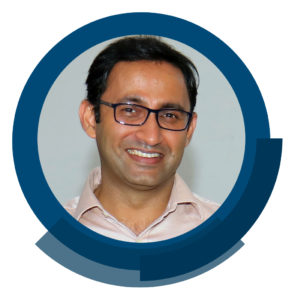The Organic & Biomolecular Chemistry Editor’s collection is a showcase of some of the best articles published in the journal, hand selected by our Associate Editors and Editorial Board members. For this month’s selection, Associate Editor Professor Santanu Mukherjee has highlighted some of his favorite recent works. Take a look at what he thought of the articles below, and find out more about the research and the researchers behind the papers in our interviews with the authors.
Santanu’s Selection:
Tsubasa Nakashima, Kohsuke Ohmatsu and Takashi Ooi
Find out more in our interview with the authors
Beyond osmium: progress in 1,2-aminooxygenation of alkenes, 1,3-dienes, alkynes,and allenes
Brett N. Hemric
Find out more in our interview with the author
Recent advances in the direct O-arylation of carbohydrates
Victoria Dimakos and Mark S. Taylor
Find out more in our interview with the authors
Tris(pentafluorophenyl)borane Catalyzed C−C and C−heteroatom Bond Formation
Gautam Kumar, Sourav Roy and Indranil Chatterjee
Find out more in our interview with the authors
Meet the Editor:
| Santanu Mukherjee, OBC Associate Editor
ORCID: https://orcid.org/0000-0001-9651-6228 Santanu Mukherjee obtained his BSc (Chemistry Honors) from R. K. Mission Residential College, Narendrapur (2000) and MSc (Chemistry) from IIT, Kanpur (2002). After completing his doctoral studies with Professor Albrecht Berkessel at Universität zu Köln in 2006, he worked as a postdoctoral fellow with Professor Benjamin List at Max-Planck Institut für Kohlenforschung in Mülheim an der Ruhr (2006-2008) and subsequently with Professor E. J. Corey at Harvard University (2008-2010). In 2010, he returned to India to join the Department of Organic Chemistry at Indian Institute of Science, Bangalore as an Assistant Professor and was promoted to Associate Professor in 2015. He is a recipient of Thieme Chemistry Journals Award (2011), Indian National Science Academy (INSA) Medal for Young Scientists (2014) and a Fellow of the Royal Society of Chemistry (2018). His research interests primarily revolve around asymmetric catalysis with particular emphasis on the discovery of new enantioselective transformations. His research group mostly relies on hydrogen bonding, Lewis base and bifunctional catalysis. More recently, he is looking to expand his research activities in the realm of iridium-catalyzed asymmetric allylic substitution reactions. |
 |










